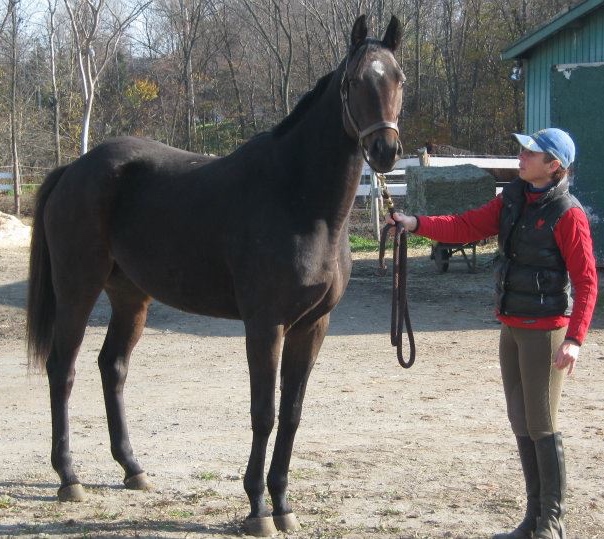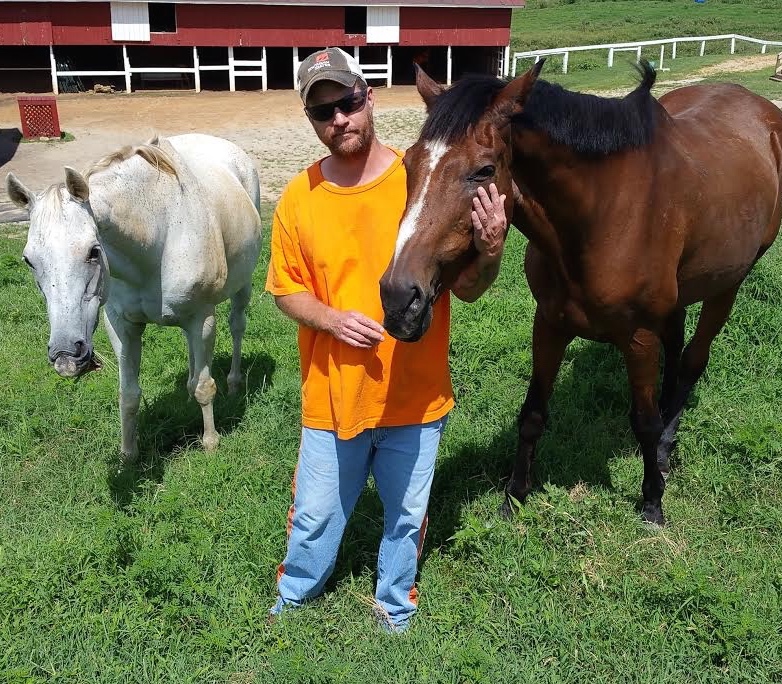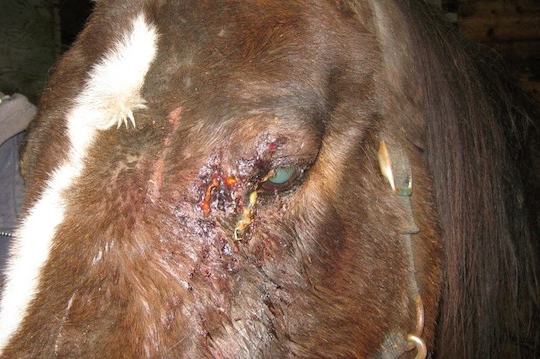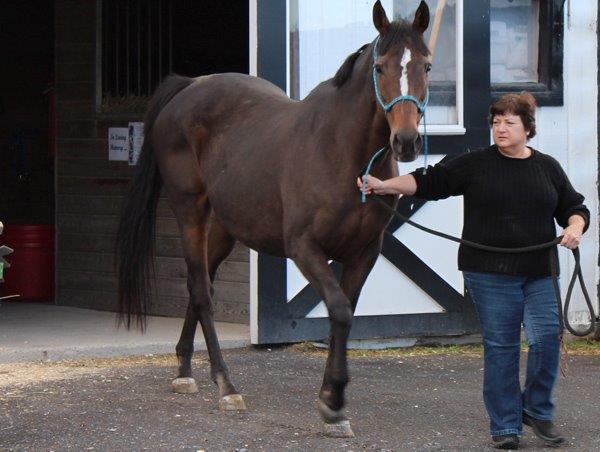
Last week, nine racehorses shipped straight to kill were rescued in a covert action. Seven are Thoroughbreds, two are Quarter Horses. Kill buyers refused to allow the release of the horse’s names.
Nine young racehorses who were reportedly “meant to disappear” in an anonymous haul of discarded Thoroughbreds and Quarter Horses were saved from death in a Mexican slaughterhouse last week by a covert rescue effort that crisscrossed the U.S. and Canada.
Racing against the clock while handling delicate negotiations with kill-buyers who insisted there would be no deal if horse Jockey Club names were released to the public, rescuers managed to quietly raise $10,000 in two days to save seven young Thoroughbreds and two Quarter Horses whose identities may never be made public.
According to Mindy Lovell of Transitions Thoroughbreds in Ontario, “The Thoroughbreds had all recently raced at the same racetrack, but for different owners. And I’m not sure where the Quarter Horses had been. The kill buyer didn’t know whether he wanted to take the risk of dealing with us because he didn’t want the trainers he works with to be identified.”
Lovell has rescued hundreds of horses over the years, including race mare Press Exclusive, who nearly died en route to slaughter. (Please see that story here).

Mindy Lovell of Transitions Thoroughbreds in Ontario helped raise $10,000 to rescue slaughter-bound racehorses. Pictured on her farm with her own horse.
Agreeing to the kill-buyer’s terms to keep the names of the tattooed Thoroughbreds secret, Lovell and a team of Thoroughbred rescue workers and advocates raised thousands of dollars last week, securing the freedom, a quarantine facility, transportation and a retirement farm for the herd, she says.
“We were extremely careful. We knew if someone said something, and it exposed the trainers, it would be the end of it” and the horses would die, Lovell says. “So we worked privately and were able to raise the funds and wire them five minutes before the noon deadline we were given.”
Joining Lovell in the all-out race to save the young, injured horses were the following:
• Wendy Thomson of Connecticut, a dog rescuer who initially learned of the horses’ plight and tipped off Lovell and raised funds;
• Gail Hirt of Beyond the Roses, who raised funds;
• Vicki Morgan, a Thoroughbred advocate of Texas, organized transport and quarantine, and donated veterinarian work;
• Marlene Murray of R.A.C.E. Fund helped toward hauling expenses;
• Racehorse owner and advocate John Murrell, who donated funds;
• Racehorse owner and advocate Maggi Moss, who donated funds.
•Lucie Berreby-Greenbaum , Director of The Greenbaum Foundation, who stepped up to cover full expenses for the surprise 9th horse.
Though the effort was a success, there’s little joy in it, Lovell says. “This isn’t something that necessarily sits right with us, when horses are coming from no-kill racetracks and going straight to slaughter.” It is a battle and not the war that was won this time.

Gail Hirt, pictured on her Michigan property, was instrumental in raising $10,000 to save 9 slaughter-bound racehorses.
And Vicki Morgan, a Texas-based Thoroughbred advocate, and a director of Remember Me Rescue in Texas, acted as an individual, and not under the tenants of her directorship, to help find quarantine shelter, and donated veterinary care for the animals she describes as being “in very bad shape.”
Of the nine, only two appear sound. Some have severe injuries and one of the Quarter Horses is foundering. All appeared malnourished and dehydrated.
“When those horses came off the van they went straight to the water trough and drank and drank and drank. And after that, they put their heads in the hay and never lifted them,” Morgan says. “We want to give them their dignity back. When a horse goes to a kill pen, I believe they know where they are, and that they knew they were in a bad place.”
Working behind the scenes to notify past owners and breeders, one such breeder has stepped forward to take back a Thoroughbred with a severely bowed tendon. “Our vet said it was the biggest bow she’s ever seen on a horse. However, this horse will get to live out his life in the pasture he was born in,” Morgan says.
Like Lovell, Morgan has never worked on a rescue with such strict conditions. She still can’t believe it worked out.
“We were told we couldn’t mention the names, because people will search out the trainer and make a big stink,” she says. “And then the racetracks will come down on the trainers. When I first heard the circumstances and the rules we had to operate under I thought there’s no way we can do this. It’s a horse’s backstory that inspires people to donate.
“To me what’s so incredible about all of this is that we had to raise $10,000 in two days. The kill-buyer said we either had to take them all, or they all go to kill.”
Though their names may not be known, the Thoroughbreds shipped straight to kill did not disappear. And Lovell and Morgan agree: this rescue job will be one they will never forget.









